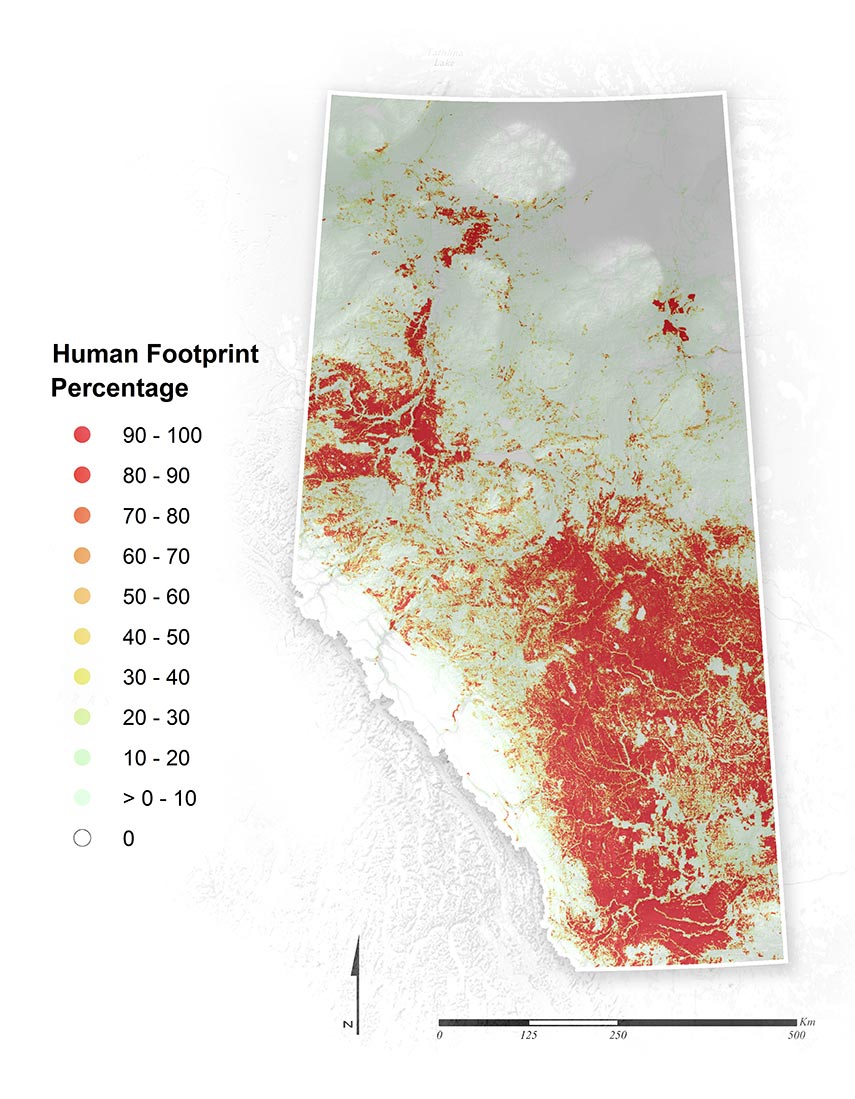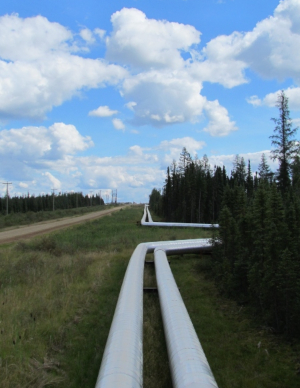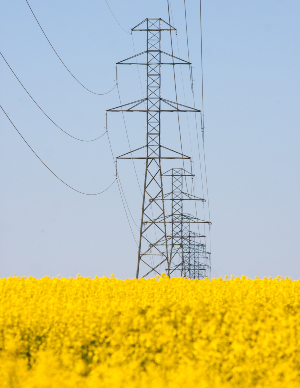Introduction
Human land use is pervasive across the planet.
We transform natural landscapes for a variety of purposes—to grow food, to extract timber and fossil fuels, to make way for new housing developments, or to build road and rail systems to transport people and goods. The extent of human land use in any given area is collectively defined as human footprint.[1,2] Measuring human footprint information is increasingly being used as a land-use planning tool to monitor the status and change of landscapes.[3]
During the past century, the availability of natural resources in Alberta has defined human land use patterns, in both time and space. The province was considered a farming frontier in the late 1800s, and most of Alberta’s human footprint in the central and southern parts of the province is the result of this farming legacy. While agriculture remains important, other human land uses, particularly forestry and oil and gas development, have expanded in recent decades into previously undisturbed areas in the Foothills and Boreal Forest Natural Regions. To meet Alberta’s growing population needs, urban areas have expanded to keep up with industrial growth. As these activities continue, understanding and managing their cumulative effects on biodiversity are priorities in Alberta.
In this report, we summarize the status and trend of human footprint (circa 2021) as well as the density of linear features throughout Alberta. We provide an overview of human footprint at the provincial scale but also break down the information by natural region, Land-use Framework Planning Region, and Oil Sands Region. These results are updated biennially.









